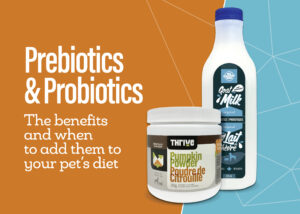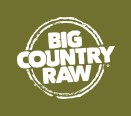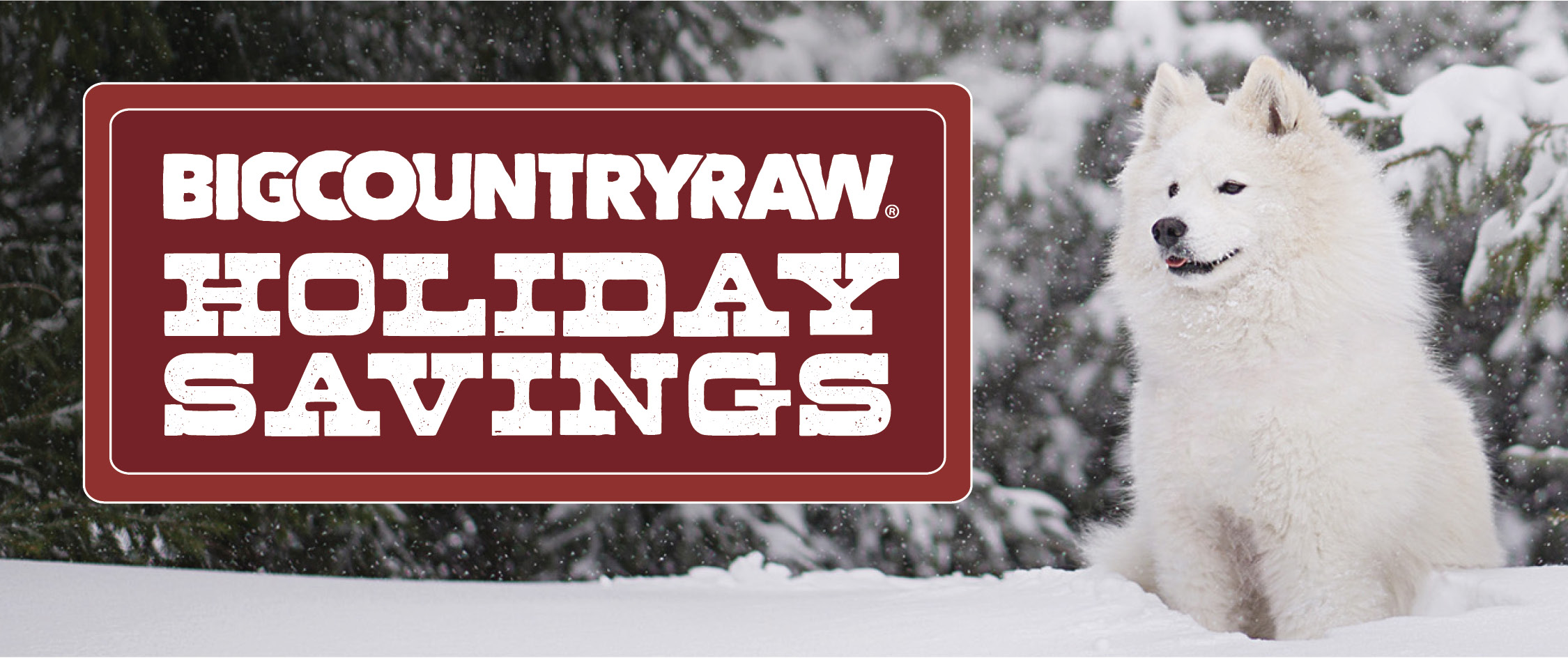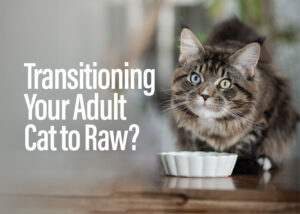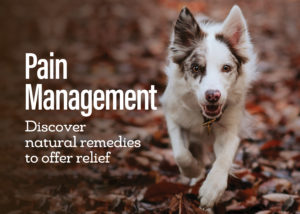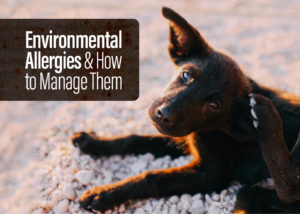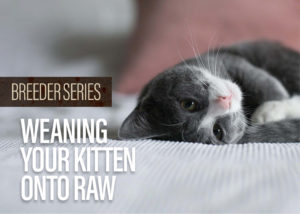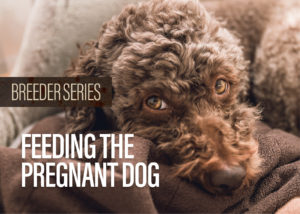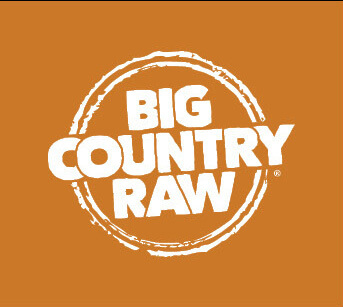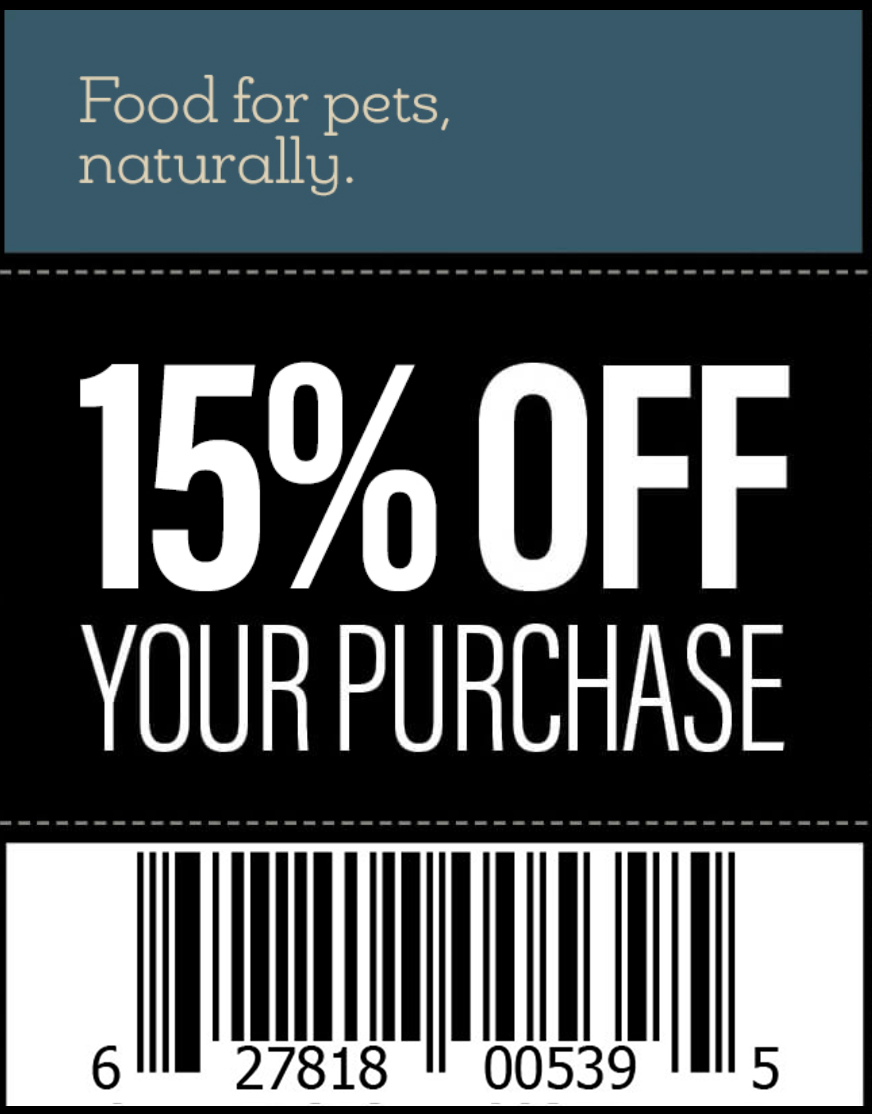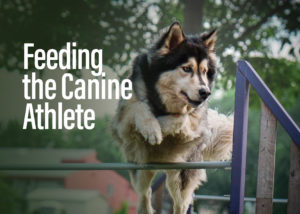
By Julie Lauzon, agr, MSc, Pet Nutrition
(Updated from a previous blog)
There are many sports that we can practice with our dogs. Even if many only practice as weekend warriors, it is possible that your passion brings you and your dog to a more professional level. At this competitive stage, small details will make a difference with regards to muscle strength and endurance of your dog. Just as in human athletes, there are many ways to help your dog perform better, with targeted training and diet, but that’s where the resemblance ends. It should be noted that a dog’s metabolism is very different than ours. From preferred energy source to hydration, adjustments to their diet promoting endurance and muscle growth are very different than in humans.
Key Definitions:
Carbs – More or less complex structures made of glucose
Glucose – Form of sugar used for transport
Glycogen – Glucose storage for animal
ATP – Energy for cells
Glycerol – Part of fat structure (paired with fatty acids)
Aerobic – Need oxygen
Anaerobic – Do not need oxygen
Stamina – Capacity for a prolonged effort
Glucogenic – Use of glucose (from glycogen or protein) to create ATP, can be both aerobic and anaerobic
Ketogenic – Use of fatty acids or protein to create ATP, only aerobic
The Dog’s Muscle Type and Preferred Energy Source
The main difference is due to the type of muscular fiber dogs have, which is different from ours and even from cats! Understanding how those muscle fibers work, what their purpose is, and how they “prefer” to get their energy, will help us optimize the diet. Without going into too much anatomic detail, it is important to know that there are three types of skeletal muscle fiber (used for locomotion). They vary in proportion depending on species. Some, such as dogs, only have two of the three fiber types. Fibers are classified according to their ATP creation preference. ATP stands for adenosine triphosphate and is the energy at a cellular level. As it will be described later, we can ingest energy in different forms that will, under different metabolic pathways, be transformed to ATP so the muscle cells can use it. The first fiber type prefers the use of oxygen to create energy (aerobic). The second type can create energy with or without oxygen (aerobic and anaerobic). Finally, the third type is most efficient in creating energy when there is no oxygen available (anaerobic). The first two types of fiber can use carbs (glucose), fat and protein as their source of energy, while the third type strictly uses what is called a glycolytic pathway. This means it can only use glucose as its energy source.
Dogs do not have the third fiber type, this is one of the major differences from us. This means that all their muscle fibers have a strong aerobic capacity. This will have a major impact on what type of energy source will be preferred for their metabolism. Before going deeper into what muscle uses which energy and why, let’s talk about energy sources. I’m sure that, just like many others, glycerol, glycogen, glucose, etc. all sound the same.
Energy Forms – From the Food to the Muscle Fuel
Back to basics! There are three major nutrients that dogs (and humans) eat, serving as energy sources to the body: carbohydrates (glucose), fat and protein. There is a wide variety of these nutrients, each stored by the body in different forms. For both humans and dogs, the body will store fat as fat, protein as protein or fat, but will not store carbs as carbs. Carbohydrates will be transformed primarily into glycogen for storage as glucose, either in the liver or muscles and all the extra carbs will be stored as fat. The body stores carbs as glycogen, which is a fast energy source. However, glycogen’s storage capacity is quite small compared to fat storage capacity. When glycogen storage is full, the extra glucose is stored as fat for use as a long-term energy source. Glycogen is the glucose storage of animal, which can be compared to starch, starch being the glucose storage of plant.
When there is a high energy demand, the body (for both humans and dogs) will break down glycogen to create the fuel – ATP. Once all the glycogen is used, the body switches to alternative sources of energy. For the human body, this is 100% true. What is also true for the human body is that if you can build and promote glycogen storage, or provide glucose during a physical exercise, you will increase your stamina capacity. If there is more glycogen available for a longer period, your muscles will be able to rely longer on this energy source. Science has shown that these last two affirmations are not true in dogs, as will be explained later.
Now back to energy storage and how the body uses fat and protein as an energy source instead of glycogen. When the body needs energy, the signals also go into the fat and the protein storage. To become an energy source, proteins will be broken down in amino acids and converted to glucose by the liver. Not all amino acids can be converted to glucose – alanine and glutamine are the preferred ones. When energy is created from glucose, either from glycogen storage or protein storage, it is called the glucogenic pathway.
The signal will also reach fat storage, inducing breakdown into two parts: free fatty acids and glycerol. These two components will then travel to the location where energy is required and will be able to generate ATP as well. The metabolic pathway for the creation of energy from free fatty acids and glycerol, is called the ketogenic pathway. The ketogenic pathway requires oxygen, while energy created from glycogen – glucogenic pathway – can be done anaerobically. Fun fact, fat oxidation (ketogenic) can create 3X more energy than glucose oxidation. Some protein can also be involved in the ketogenic pathway, and the two preferred amino acids for this energy conversion are leucine and lysine.
Glycogen is used by anaerobic muscle tissue for a fast and strong contraction. Since the storage of glycogen is limited, this muscle type will lose their energy source quickly. Those muscles are involved in sprints and jumps, but less in endurance exercises, while aerobic muscles can rely on long term energy storage like fat or protein. They will be slower but will be able to work for a long period of time.
It is important to understand energy conversion processes because it will guide us in the specifications of a diet for your furry athlete. We could go even deeper into metabolic pathways, but you understand enough now for the purpose of this article.
Here’s what is important to remember: Carbs in the body will be stored as glycogen, while the extra will be stored as fat. Glycogen is the fastest (most easily accessible) energy source, but the storage is limited. Fat and protein will be stored as they are, efficient long-term energy sources to be used by endurance muscles.
Ideal Proportion of Fat, Protein, and Carbs for the Athlete Dog Diet
There are some very important differences between dogs and humans that we need to take into account. Based on the information provided above, it would be logical to think that dogs will also use all the glycogen available before jumping to fat and protein as energy sources. Therefore, one would assume building glycogen reserves would be a great way to increase the stamina. However, that would be forgetting that the main muscle fibers in dogs are aerobic, and therefore, are naturally more adapted to use protein and fat as energy sources. Studies have shown that at rest, muscles use aerobic energy sources; 20% from free fatty acids and 30% from glucose. When the dog performs physical effort, the proportion of glucose utilization will decrease to 10% and the free fatty acid proportion will rise to 70% of the energy source. This fraction will change with the intensity of the physical effort. If the dog is closer to maximum effort over a short period of time, the utilization of glucose (from glycogen or protein) will increase at the detriment of fat – still on the aerobic pathway. During physical exercise, dogs will rely on an anaerobic source of energy for the first 7 to 15 seconds of effort and will then move to aerobic energy sources after 30 to 60 seconds, even if there is still glycogen available. Therefore, feeding a high carb diet with the purpose of potentially increasing glycogen storage and stamina is not applicable to dogs. In addition, feeding higher fat diets have been proven to spare glycogen storage and improve stamina.
According to the NRC, higher carb diets (over 38% carbs) have also been shown to lower the concentration of red blood cells in the body. Red cells, being the oxygen transporters, means high carb diets can also impact stamina. If there is less oxygen arriving to aerobic muscle, the energy conversion slows down. There are studies that have shown very active dogs, such as sled dogs, can rely 100% on protein as their glucose precursor. The liver will convert certain amino acids to glycogen, making it available as an anaerobic energy source for short, intense physical effort.
To summarize, this doesn’t mean your dog can’t benefit from some carbs in their diet, but the amount and time of feeding is important. More importantly, carbs shouldn’t be added to the detriment of protein and fat. The addition of carbs could help dogs having a hard time building fat storage on protein and fat diets alone.
For dogs doing sprints or acceleration only (maximum effort for a short period of time) here’s what the diet breakdown should look like: minimum 30% of metabolizable energy coming from fat, minimum 24% from protein, and maximum 45% from carbs. For other sport dogs, like hunting, traction or other sports involving more aerobic energy sources, the diet breakdown should be: minimum 50% of the metabolizable energy coming from fat, minimum 35% from protein, and maximum 15% from carbs.
It is also important to consider body condition score and excess weight as a major component in sport performance. Being overweight increases the risk of injuries and joint issues. We now also know that obesity is mainly linked to high sugar diets (glucose and starch) – eating a lot of those carbs increases the secretion of insulin, promoting storage of glucose in fat, decreasing the effect of leptin, the satiety hormones. This is called leptin resistance – the body’s never-ending circle of being hungry and stocking fat as consequence. Feeding a low carb diet to the canine athlete promotes stamina and reduces the risk of obesity.
Time of Feeding
Two other important factors in feeding your canine athlete is time of feeding and hydration. Dogs should never engage in physical activity directly after a meal. In fact, in studies made on sled dogs, results indicated that dogs that fasted but had access to water, performed better than dogs who ate right before the physical activity. Dogs should be fed a very small meal the morning before a physical activity, only if that meal is at least 3-5 hours before the start. If not, then it is better that the dog doesn’t eat at all. Also allow your dog to cool down for a couple of hours before feeding a main meal of the day. Dogs can eat once daily without any issue.
Hydration; Dos and Don’ts
Regarding hydration, it is the complete opposite, and may be the most important part of feeding the canine athlete. According to the few available studies done with sporting dogs, sled dogs that have fasted for several days but are well hydrated perform better than dogs that have eaten their fill the day before but have not drank enough before, during and after physical exercise. This means that all the effort put into the diet and training of dogs can be reduced to nothing by the simple factor of inadequate hydration on the day of performance.
Blood is mostly made up of water. We can therefore say that water is largely responsible for the transportation of red blood cells and therefore oxygen (essential during physical exertion) as well as waste material. Water also plays an essential role in terms of thermoregulation – the body’s ability to regulate its temperature. This is another essential regulatory aspect when practicing a sport since physical effort leads to an increase in body temperature.
Dogs will regulate their temperature through panting and sweat glands in their paw pads and noses. Their loss will mainly be water – not electrolytes like us humans. Feeding electrolytes to dogs that have not lost any through vomiting or diarrhea can cause major damage to renal function long term. According to the NRC, offering solutions containing electrolytes, glucose and protein does not lead to better hydration or performance. These “solutions” can even cause diarrhea in some individuals. Also, according to the NRC, the blood sodium and potassium content remain the same during normal physical effort and increases only during prolonged physical effort. We must therefore avoid providing more. The dog’s saliva composition will increase in sodium, chloride, and magnesium, but the total loss is negligible. Majority of hydration loss will be through the paws, and this loss is only water, so water is the only thing your dog will need!
As it relates to minerals, sporting dogs will benefit from a diet higher in some minerals like calcium, phosphorus, magnesium, potassium, as well as B vitamins. In fact, sporting dogs should not be fed “adult” food, as the minimum nutrient requirements are too low to meet their needs. Athlete dogs require a diet closer to the nutrient profile of growing puppies and should be fed an “all life stages” food.
It is also important to note that dogs will need water throughout their physical performance. Do not wait for your dog to be thirsty, because dogs will often feel the need to drink once dehydration is well advanced. At that point, they will drink a huge amount of water potentially creating digestive issues. Water loss during exercise is a continuous process, while many dogs drink water only occasionally. Don’t hesitate to offer water on multiple occasions during physical performance. If needed, add enhancers (that do not contain too many electrolytes), like goat milk, bone broth, or simply drop a couple treats in the bowl!
This article should give you many tools to help increase your dog’s performance this summer in your favourite sports, but don’t hesitate to reach out if you need further support for your canine athlete!
Shop Now
